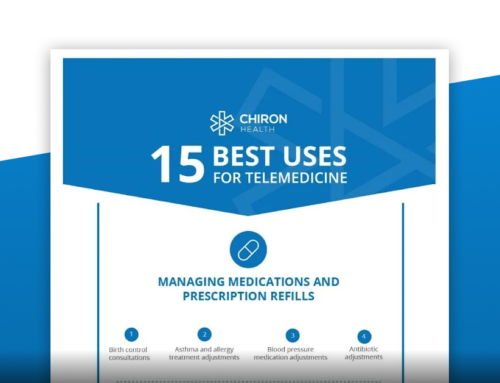As COVID-19 increases social distancing across the U.S., health care systems nationwide are scrambling to implement telemedicine care for non-emergency patients. For Clint Phillips, the CEO of telemedicine health care company Direct Health, it’s an approach he and his team has been perfecting for years.
“Health care is basically the exchange of words,” Phillips says. “Paperwork [does not make] someone feel better, because true health care is about communication between a doctor and the patient.” Telemedicine, says Phillips, streamlines health care to its most essential component, breaking down efficiency barriers that have plagued the industry for decades.
Created for Care
Rather than simply connecting patients to an unfamiliar doctor in a call center, Direct Health was created to improve communication between doctors and their already-established patients. Since records aren’t being transferred between a primary provider and a tele-doctor, Phillips says, this prevents medical records from being lost or fragmented. But it also helps improve communication and trust between provider and patient, adds Phillips, which can lead to better health outcomes. One 2018 study from the journal Critical Care Medicine, for example, showed that telemedicine interventions lowered mortality rates for patients in intensive care units and even decreased the length of hospital stays.
The benefits of telemedicine are vast, says Jody Tropeano, content director at HLTH, the noted conference for health innovation. “If patients can utilize telemedicine to handle more mild symptom checking and other routine medical visits during this crucial time, it’s going to ease the burden to the health systems and allow clinicians to focus on higher-risk COVID-19 patients and other emergencies.”
Time for Change
Historically, telemedicine has been slow to catch on with employers, Phillips says. “A pop-up doctor in a call center might still need to refer you to your primary-care doctor for your in-person visit. Now your employer is paying for a virtual visit and an in-person visit, and that’s more expensive,” he says. Additionally, many are skeptical whether current telemedicine models are changing patient behavior—and health outcomes—for the better. “The telemedicine that connects you to a stranger in a call center will try to help you as best they can, but the medical care will be limited,” says Phillips. “He might not be able to help you manage or change your behavior, because there’s not a strong relationship there.”
That’s why, Phillips says, patients need actual relationships with doctors who know their health history and with whom they have established trust. This leads to more streamlined care, fewer referrals, and, ultimately, lower costs.
“Employers, and employees with telehealth as a current benefit, might have been shy to adopt virtual care until this point. However, I think people will start to feel more confident in the benefits of telemedicine and utilize it more routinely going forward,” The latter is already true, according to Phillips: Before the pandemic, virtual care visits were expected to overtake in-person care visits by the year 2023. “Thanks to COVID-19, we’ve accelerated that curve by about two years,” he says.Fortunately, says Phillips, “we can use virtual care to do pretty much anything in order to help patients.”
Originally published on Fortune.com on May 1,2020.





Leave A Comment